Full List Of The Least And Most Independent States In The U.S
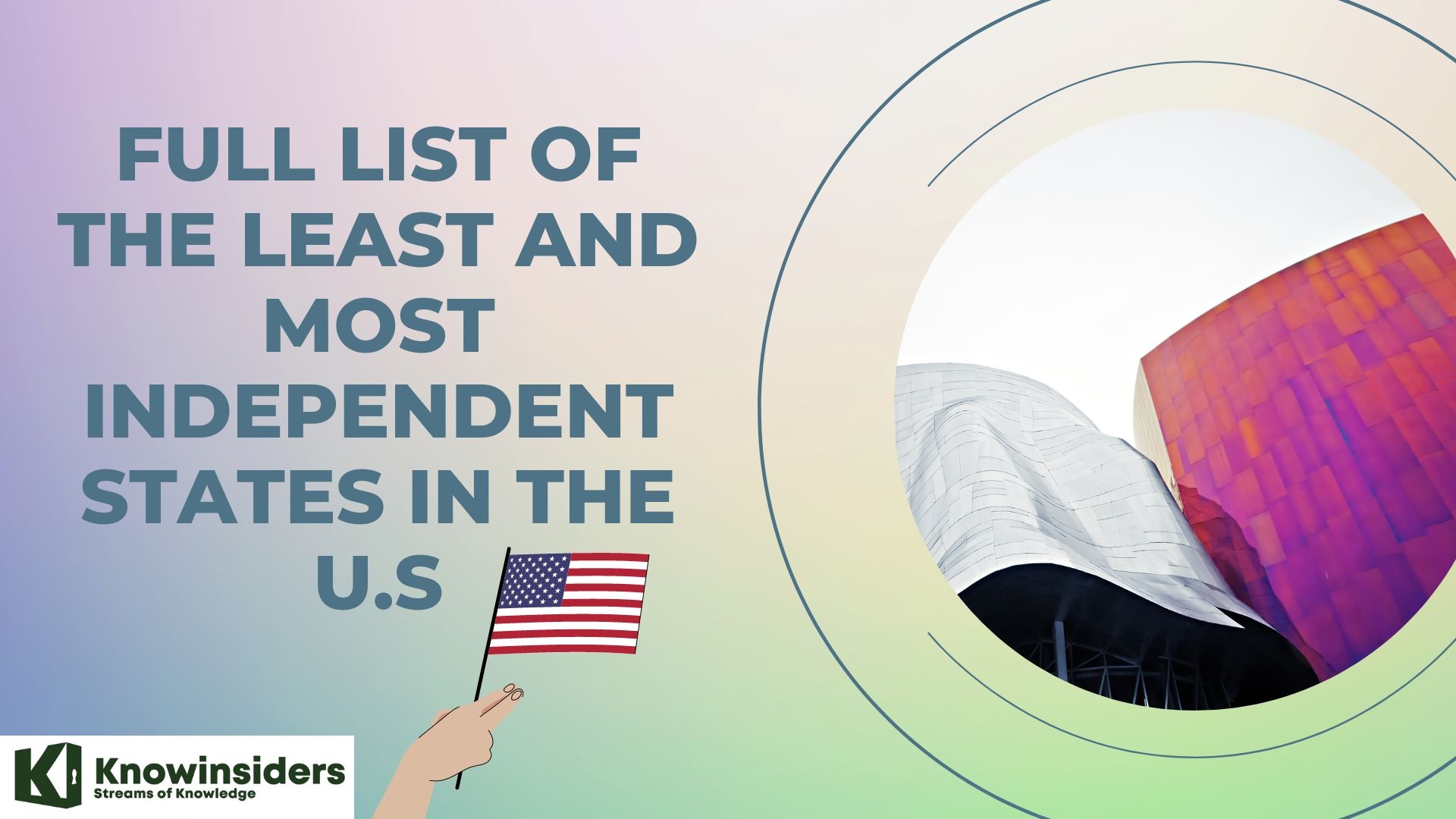 |
| Full List Of The Least And Most Independent States In The U.S |
| Table Content |
Fourth of July Celebrations are days away, and as Americans move beyond many pandemic-era restrictions, a new WalletHub analysis ranks the states that enjoy the most and least independence.
WalletHub determined which states were the most self-sufficient by comparing all 50 states across 39 metrics of dependency, including finances and reliance on the government.
Utah, which has the highest percentage of residents with rainy day and emergency funds, is currently the most independent state. Utah also has one of the highest median incomes, when adjusted for the cost of living, and is one of the states that rely the least on support from the federal government, according to the report.
Colorado, Massachusetts, Virginia and Nebraska took the other four top spots, while Kentucky, Louisiana, Mississippi, Alaska and South Carolina held the bottom five positions on WalletHub’s list.
In 2022, Kentucky is the nation’s least independent state, followed by Louisiana, Mississippi, Alaska, and South Carolina.
In contrast, the nation’s top five most independent states are Utah, Colorado, Massachusetts, Virginia, and Nebraska, respectively.
With regard to median credit score, three of the worst states, Mississippi, Louisiana, and Kentucky also ranked in the bottom five.
Mississippi was also among the bottom five states having the least percentage of households with rainy-day and emergency funds. Texas, South Dakota, Alabama, and West Virginia rounded out this group.
When measuring government dependency, researchers found Alaska, West Virginia, Mississippi, New Mexico and Kentucky were the most reliant on the federal government. Kentucky and Alaska also ranked among the lowest for international-trade dependency.
When asked by WalletHub if it was fair to states that others were more dependent on federal support, one expert said that opinion is “in the eyes of the beholder.”
“Federal money that goes to individuals is given out by formulas and while each state is different the people in the more dependent states are still entitled to the support they receive from the federal government,” Matthew Hale, an Associate Professor at Seton Hall University, told the site.
Hale noted there are some unfair aspects, including among states that have higher average incomes and therefore pay more federal taxes.
“But they also use state tax money to augment social services. That means residents pay far more to the federal government and get far less in return. That is unfair no matter how you slice it,” Hale said.
Related: How Old Is The United States - Birthday of America?
What are the most independent states in the U.S - Top 10?
1. Utah
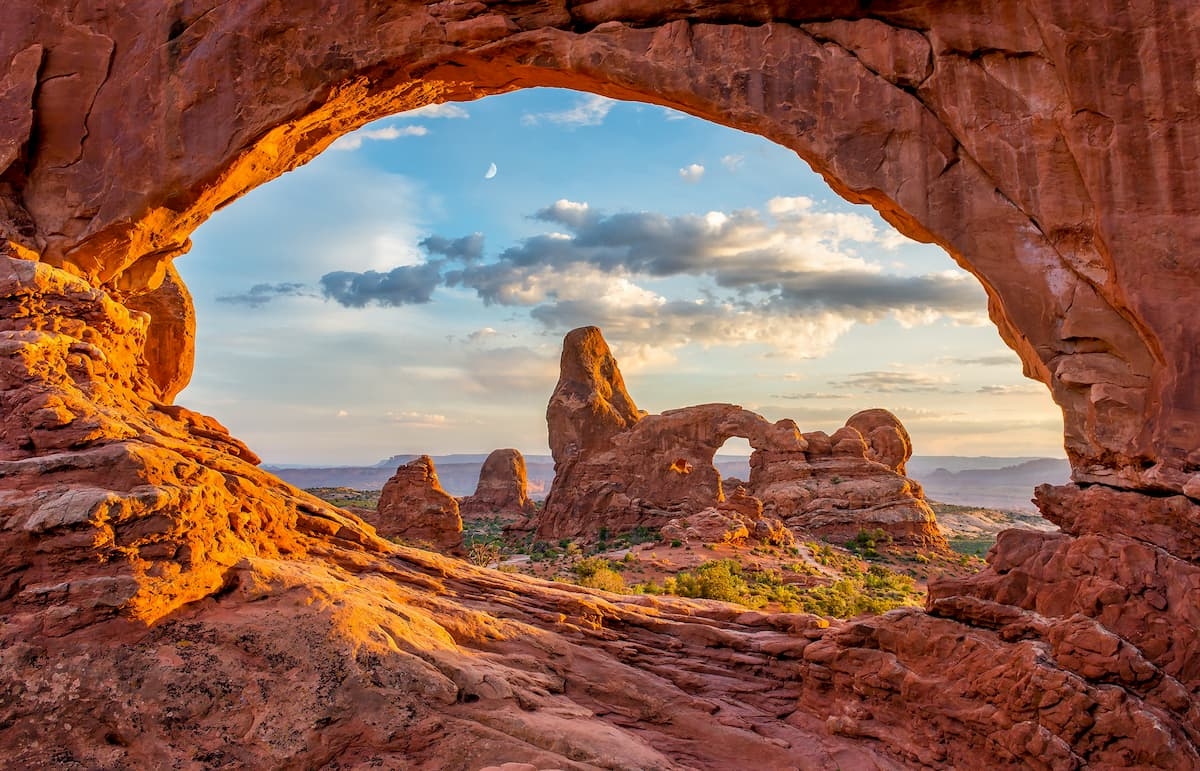 |
| Photo: Getty Images |
Utah is a state in the Mountain West subregion of the Western United States. Utah is a landlocked U.S. state bordered to its east by Colorado, to its northeast by Wyoming, to its north by Idaho, to its south by Arizona, and to its west by Nevada. Utah also touches a corner of New Mexico in the southeast. Of the fifty U.S. states, Utah is the 13th-largest by area; with a population over three million, it is the 30th-most-populous and 11th-least-densely populated. Urban development is mostly concentrated in two areas: the Wasatch Front in the north-central part of the state, which is home to roughly two-thirds of the population and includes the capital city, Salt Lake City; and Washington County in the southwest, with more than 180,000 residents. Most of the western half of Utah lies in the Great Basin.
Agriculture and forestry
Following the national trend, farm employment and the number of farms in Utah declined throughout the late 20th century, while agricultural productivity increased. Small farming remains important in the Sevier River valley, but agribusiness is prominent in other areas in the state. Almost three-fourths of Utah’s farm income comes from livestock products, and the remainder from field crops, fruit, and canning crops. Forests cover nearly one-third of Utah, but only about one-fifth of the forestland is used commercially.
Resources and power
In the early 21st century, Utah consistently ranked high among the states in nonfuel mineral production. Among its top mineral products were beryllium, of which Utah was the only producer in the United States, and copper; the Kennecott Bingham Canyon Mine, in the Oquirrh Mountains, has produced more copper than any other mine in the world. The state is also a major producer of gold, silver, uranium, and molybdenum. Salt was once the only mineral extracted in quantity from the Great Salt Lake, but sophisticated chemical industries now operate on the shores of the lake, using its brines to also produce magnesium, halite, potassium sulfate, and sodium sulfate for industrial use throughout the world. Other significant mineral products are Portland cement, sand and gravel, crushed stone, lime, phosphate rock, and gemstones.
Utah is one of the United States’s major producers of coal west of the Mississippi, and almost all of the state’s power is generated by coal and natural gas. A much smaller amount comes from hydroelectric and other renewable sources. Utah is the only state producing gilsonite, a source of road oil, paving binder, and asphalt tile.
Manufacturing
The proportion of personal income derived from manufacturing is below the national average. Printing and publishing, food processing, petroleum refining, and the production of transportation equipment, computer hardware and software, nonelectrical machinery, rocket engines, and fabricated-metal products are the major manufacturing sectors.
Services and taxation
Employment in business and military services, state and federal government, and tourism continues to increase at a faster rate than other sectors of the economy. The tourism sector relies upon the attraction of the region’s fiery, intricately sculptured natural bridges, arches, and other masterpieces of erosion. Another draw for tourists is skiing; the state has more than a dozen ski resorts, including several located in the area of Park City.
Transportation
Utah’s transportation system, with easy access to all national markets, is the basis for the state’s development as a major distribution centre for the West. As in much of the country since the mid-20th century, railway mileage has decreased while road traffic has expanded; several interstate highways supplement the state system. A major east-west Amtrak national passenger route serves cities in Utah’s north and central regions. In addition to the international airport serving Salt Lake City, there are excellent feeder line facilities in Ogden, Logan, Provo, Cedar City, and Saint George.
2. Colorado
 |
| Photo: TripAdvisor |
Colorado is the eighth-largest state in terms of landmass. While its geographic diversity and natural resources have been an economic boon as well as a draw for tourism, the state's government has made efforts to diversify the economy over the past decades. Its admission as the 38th state, in 1876, the same year as the centennial of the Declaration of Independence, earned its nickname the Centennial State.
Colorado is home to some of the country's tallest mountains, and has the highest mean elevation of any U.S. state. Whether tourists come to the state as skiers flocking to Aspen and Vail, outdoor enthusiasts traveling through the Rocky Mountains or the Great Plains or fans of the rapidly developing pot tourism industry, the state's investments have paid off in the form of billions of tourism dollars per year.
Colorado and Washington were the first states to legalize marijuana. The industry generated more than $387 million in tax revenue in 2020, according to the state's Department of Revenue. Historically, the state has been rich in agriculture, livestock and mineral extraction. In addition to tourism, the state's economy is bolstered by a developing technology scene and a presence from the military, including the U.S. Air Force Academy.
Colorado is bordered by Wyoming, Nebraska, New Mexico, Oklahoma, Kansas and Utah. The state's Southwest corner is known as one of the "Four Corners" and is the point where Arizona, New Mexico, Utah and Colorado meet.
3. Massachusetts
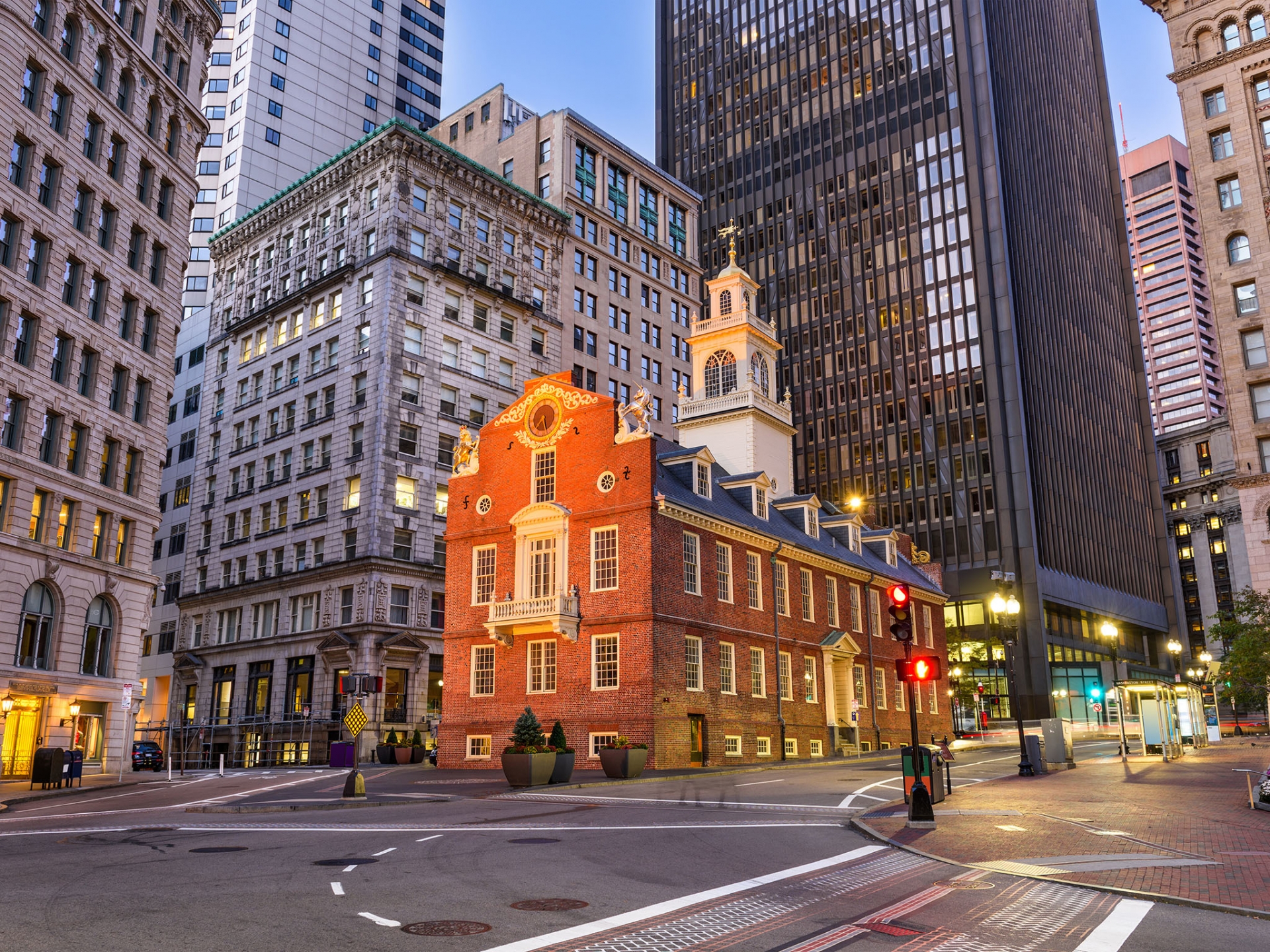 |
| Photo: Time Out |
The state of Massachusetts has a population of 6,892,503 and annual population growth of 0.4% over the five years to 2019 which ranks 25 out of all 50 US states. Massachusetts’s gross state product (GSP) in 2019 reached $518.7bn, with growth of 2.7% over the 5-years to 2019. Businesses in Massachusetts employed a total of 24.2 million in 2018, with average annual employment growth of 2.6%. The top three employment sectors include Health care and social assistance, Retail trade and Professional, scientific, and technical services while the unemployment rate across the state in March 2020 was 5.3%.
Massachusetts's GSP in 2019 reached $518.7bn, with growth of 2.7% over the five years to 2019. Massachusetts's GSP growth ranks 13 out of all 50 US states. GSP is a measurement of a state's output, or the sum of value added from all industries in the state. It is a common indicator used to track the health of an economy.
The state of Massachusetts employs 4.9 million people with a growth rate of 2.3% over the five years to 2018 which ranks it 13 out of all US states. Major employment sectors in Massachusetts include Health care and social assistance, Retail trade and Professional, scientific, and technical services.
Per capita disposable income, also known as disposable personal income (DPI), is the amount of money that a person has available for spending and saving after accounting for income taxes. Disposable income is regarded as a key economic indicator used to gauge the overall state of an economy. Massachusetts’s DPI in 2018 was $71,683 which places it 2 out of all 50 US states.
4. Virginia
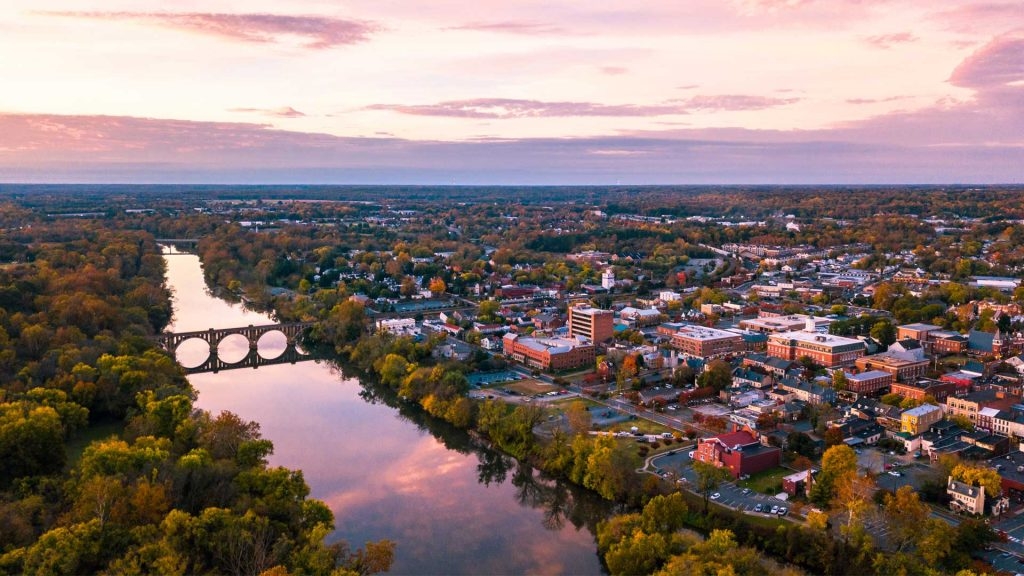 |
| Photo: Getty Images |
Virginia, officially the Commonwealth of Virginia, is a state in the Mid-Atlantic and Southeastern regions of the United States, between the Atlantic Coast and the Appalachian Mountains. The geography and climate of the Commonwealth are shaped by the Blue Ridge Mountains and the Chesapeake Bay, which provide habitat for much of its flora and fauna. The capital of the Commonwealth is Richmond; Virginia Beach is the most-populous city, and Fairfax County is the most-populous political subdivision. The Commonwealth's population in 2020 was over 8.65 million, with 36% of them living in the Baltimore–Washington metropolitan area.
In 1607, 100 English settlers arrived in what is now Virginia to find a robust realm of Native American tribes. They founded their own fort on the southern shore, later known as Jamestown.
While the colony prospered on tobacco farming, with indentured servants and enslaved Africans sustaining the economy, its Native American ranks were devastated by a “war of extermination” that reduced their numbers from 20,000 to 3,000. Later, as the colony flourished, descendants of those settlers started planning their own independence from England.
After the election of Abraham Lincoln, Virginia became the eighth state to secede from the Union, on April 17, 1861. In the following days, Union Army forces crossed the Potomac River to seize Alexandria, a slave port at the time, to prevent the Confederate Army from having a base so close to Washington.
The surrender of the Army of Northern Virginia that signaled the end of the war was signed at the courthouse in Appomattox on April 9, 1865.
Following the Civil War, Virginia remained generally rural and resisted social changes. The state Legislature enacted a Racial Integrity Act in 1924 barring marriages of “whites” and “coloreds.” In the case of Loving vs. Virginia, the U.S. Supreme Court overturned the state’s interracial marriage ban in 1967.
Virginia still possesses its own North-South divide, with the rural, mountainous reaches of the Blue Ridge Mountains and southwestern valleys and southeastern Tidewater region offsetting the sprawling suburban Washington, D.C., corridor of the northeastern counties.
Virginia’s economy is as diverse as the shipbuilding on the southern shore, the farming and tobacco-growing of rural areas, seafood harvesting along the Atlantic coast and rivers, the apple-growing capital of Winchester in the northwest, wineries spread among the countryside and the technology companies of the suburban Washington corridor.
5. Nebraska
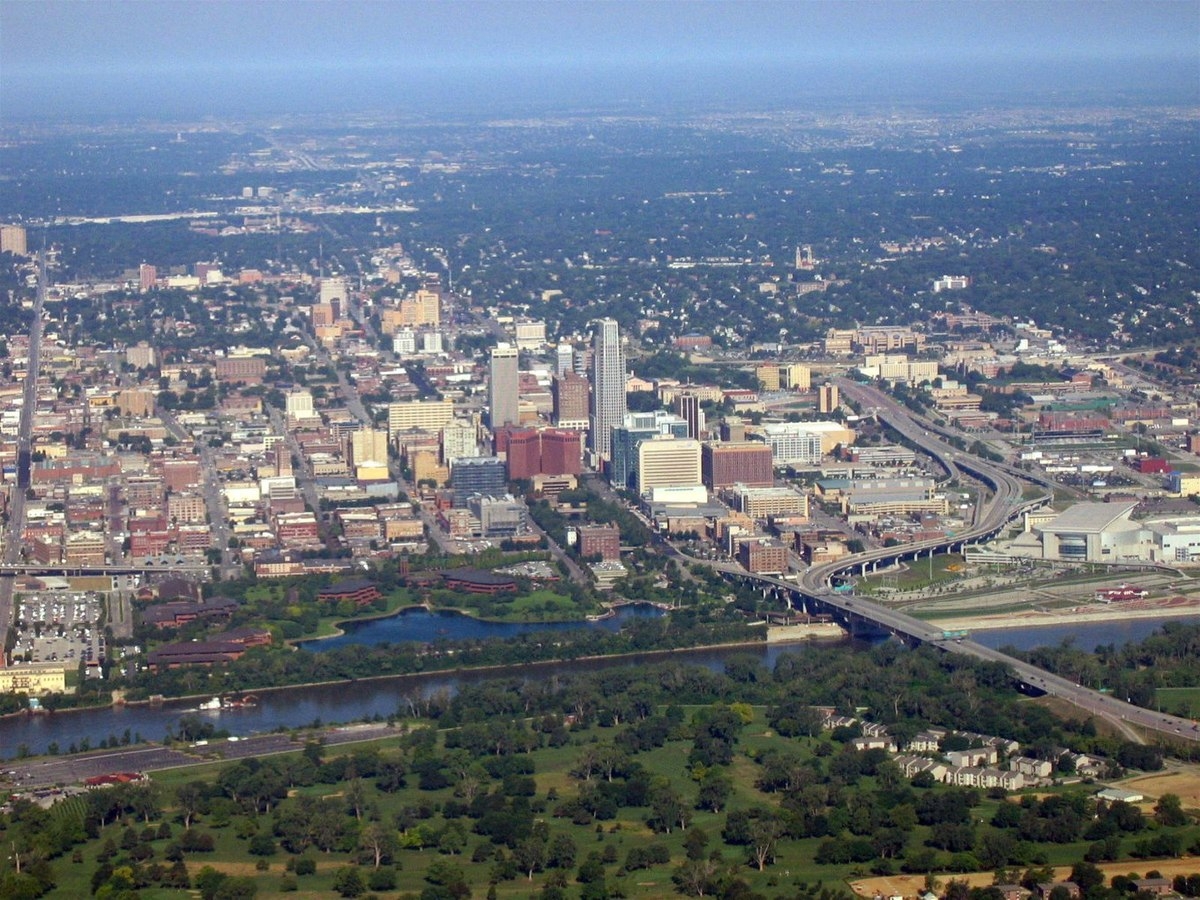 |
| Photo: Wikipedia |
Nebraska is a midwestern U.S. state encompassing the prairies of the Great Plains, the towering dunes of the Sandhills and the panhandle’s dramatic rock formations. Lincoln, the capital and a vibrant university town, is distinguished by its soaring state capitol. The city of Omaha is home to the Durham Museum, which honors the state’s pioneering past in a converted railroad depot.
In 2020, Nebraska generated around $21.1 billion in agricultural cash receipts with the highest valued commodities being cattle and calves, corn, and soybeans. That same year, the value of Nebraska’s agricultural production and processing industries represented 9.4 percent of total state GDP. Some of the dollars generated by these industries end up being re-spent within the local economy, bringing additional value to the state through “multiplier effects.” Economic impact and contribution studies measure these effects, which can be broken down into direct, indirect, and induced economic effects.
6. Florida
Florida is the southeasternmost U.S. state, with the Atlantic on one side and the Gulf of Mexico on the other. It has hundreds of miles of beaches. The city of Miami is known for its Latin-American cultural influences and notable arts scene, as well as its nightlife, especially in upscale South Beach. Orlando is famed for theme parks, including Walt Disney World.
The state of Florida has a population of 21,477,737 and annual population growth of 1.6% over the five years to 2019 which ranks 4 out of all 50 US states. Florida’s gross state product (GSP) in 2019 reached $950.8bn, with growth of 3.4% over the 5-years to 2019. Businesses in Florida employed a total of 24.2 million in 2018, with average annual employment growth of 2.6%. The top three employment sectors include Health care and social assistance, Retail trade and Professional, scientific, and technical services while the unemployment rate across the state in March 2020 was 5.3%.
Florida's GSP in 2019 reached $950.8bn, with growth of 3.4% over the five years to 2019. Florida's GSP growth ranks 8 out of all 50 US states. GSP is a measurement of a state's output, or the sum of value added from all industries in the state. It is a common indicator used to track the health of an economy.
The state of Florida employs 12.5 million people with a growth rate of 3.4% over the five years to 2018 which ranks it 1 out of all US states. Major employment sectors in Florida include Health care and social assistance, Retail trade and Professional, scientific, and technical services.
Per capita disposable income, also known as disposable personal income (DPI), is the amount of money that a person has available for spending and saving after accounting for income taxes. Disposable income is regarded as a key economic indicator used to gauge the overall state of an economy. Florida’s DPI in 2018 was $50,070 which places it 28 out of all 50 US states.
7. Idaho
Idaho is a state in the Pacific Northwest region of the Western United States. To the north, it shares a small portion of the Canadian border with the province of British Columbia. It borders the state of Montana to the northeast, Wyoming to the east, Nevada and Utah to the south, and Washington and Oregon to the west. The state's capital and largest city is Boise. With an area of 83,570 square miles (216,400 km2), Idaho is the 11th largest state by land area, but with a population of approximately 1.8 million, it ranks as the 13th least populous and the 7th least densely populated of the 50 U.S. states.
Snowy mountains, deep valleys, lakes and rivers cover the Gem State, which is twice the size of the six New England states combined. A Rocky Mountain state, Idaho is bordered by Washington, Oregon, Nevada, Utah, Montana, Wyoming and a small portion of Canada’s British Columbia.
Though Spaniards began exploring the Northwest in 1592, Meriwether Lewis and William Clark were the first European-Americans to enter Idaho in 1805. During the Gold Rush of the mid-1800s, miners flocked to California and Idaho, where they found gold, copper and lead.
In the mid-19th century, Union and Confederate supporters fleeing the Civil War went west to Idaho, and Mormons flocked to the region to avoid persecution. Today more Mormons live in Idaho than in almost any other state.
President Abraham Lincoln created the Idaho Territory, which included much of the land that would become Idaho, Montana and Wyoming. In 1868, modern Idaho was carved from the territory, and in 1890 it became the 43rd state.
Idaho’s economy shifted away from mining toward agriculture after it achieved statehood. Some former mining towns began to host resorts, such as the Sun Valley ski resort, which opened in 1936.
The $3 billion tourism industry plays a key role in Idaho’s economy, and major industries in the state include advanced manufacturing, aerospace, computer technology and innovation, energy, food production and recreation technology.
8. Wisconsin
 |
| Photo: Getty Images |
Wisconsin is a state in the upper Midwestern United States. Wisconsin is the 25th-largest state by total area and the 20th-most populous. It is bordered by Minnesota to the west, Iowa to the southwest, Illinois to the south, Lake Michigan to the east, Michigan to the northeast, and Lake Superior to the north.
Wisconsin’s three major economic enterprises are manufacturing, agriculture, and tourism. It ranks among the top one-fourth of all states in farm income and manufactured goods. Although the production of durable goods, the state’s major type of manufacturing, fluctuates with the economy, this fluctuation tends to be balanced out by the processing of agricultural and raw forest materials (largely for papermaking), which has remained relatively stable. The major markets for Wisconsin’s products, the sources of most of its energy supplies, and a high proportion of its raw materials lie outside the state. Since the mid-1990s the state government has made efforts to aid small and minority businesses, add maximum value to raw materials before shipment out of state, promote tourism, and increase international trade and investment.
Iron is no longer mined in Wisconsin, but nonmetallic minerals include sand, gravel, cement, and limestone. Deposits of zinc and copper were discovered in northern Wisconsin in 1976 but have not been extensively mined. In the early decades of the 19th century lead mining was prevalent in southwestern Wisconsin, and the miners (many of whom were of Cornish descent) who burrowed dugouts like badgers into the hillsides for their lodging are responsible for Wisconsin being nicknamed the Badger State.
Most of the state’s electrical power is generated in coal-burning plants, although a significant amount is produced in the state’s three nuclear facilities. There are several hydroelectric power plants on the Wisconsin River. Biodiesel production has increased since the early 2000s, with several plants throughout the state producing biodiesel using oil from canola, corn (maize), soybean, flax, and sunflower crops.
9. Washington
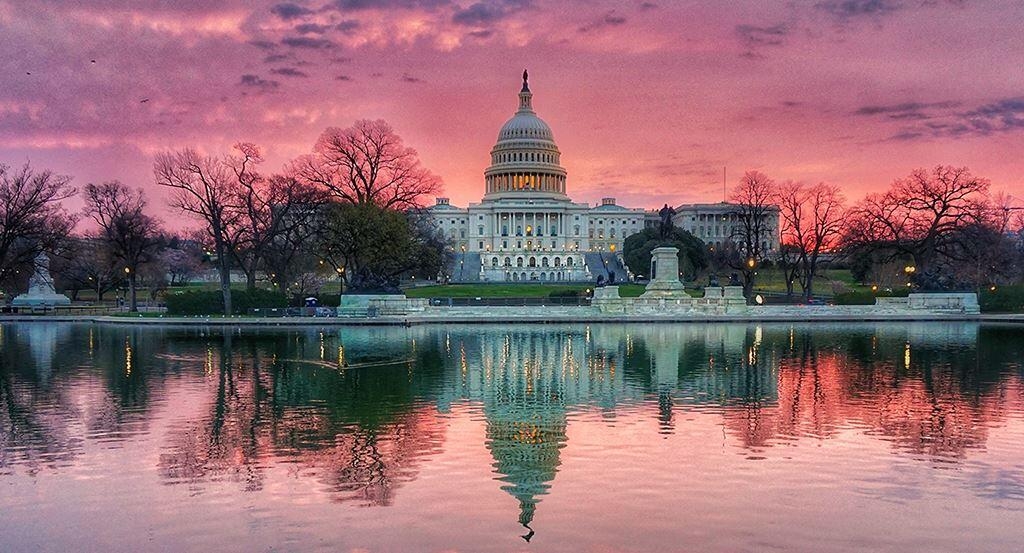 |
| Photo: TAP Air Portugal |
Washington, officially the State of Washington, is a state in the Pacific Northwest region of the Western United States. Named for George Washington—the first U.S. president—the state was formed from the western part of the Washington Territory, which was ceded by the British Empire in 1846, by the Oregon Treaty in the settlement of the Oregon boundary dispute. The state is bordered on the west by the Pacific Ocean, Oregon to the south, Idaho to the east, and the Canadian province of British Columbia to the north—was admitted to the Union as the 42nd state in 1889.
The state of Washington has a population of 7,614,893 and annual population growth of 1.5% over the five years to 2019 which ranks 6 out of all 50 US states. Washington’s gross state product (GSP) in 2019 reached $531.2bn, with growth of 4.5% over the 5-years to 2019. Businesses in Washington employed a total of 24.2 million in 2018, with average annual employment growth of 2.6%. The top three employment sectors include Health care and social assistance, Retail trade and Professional, scientific, and technical services while the unemployment rate across the state in March 2020 was 5.3%.
The state of Washington employs 4.6 million people with a growth rate of 2.7% over the five years to 2018 which ranks it 8 out of all US states. Major employment sectors in Washington include Health care and social assistance, Retail trade and Professional, scientific, and technical services.
Per capita disposable income, also known as disposable personal income (DPI), is the amount of money that a person has available for spending and saving after accounting for income taxes. Disposable income is regarded as a key economic indicator used to gauge the overall state of an economy. Washington’s DPI in 2018 was $62,026 which places it 7 out of all 50 US states.
10. Delaware
 |
| Photo: Christopher Boswell |
Delaware, a small Mid-Atlantic U.S. state, sits on a peninsula marked by dune-backed beaches bordering the Atlantic Ocean, Delaware River and Delaware Bay. In Dover, the capital, First State Heritage Park encompasses 18th-century Colonial landmarks like the Georgian-style Old State House. The city of Wilmington is known for the Riverfront, a waterside district of parks, boutiques and restaurants.
The state of Delaware has a population of 973,764 and annual population growth of 0.9% over the five years to 2019 which ranks 14 out of all 50 US states. Delaware’s gross state product (GSP) in 2019 reached $63.3bn, with growth of -0.1% over the 5-years to 2019. Businesses in Delaware employed a total of 24.2 million in 2018, with average annual employment growth of 2.6%. The top three employment sectors include Health care and social assistance, Retail trade and Professional, scientific, and technical services while the unemployment rate across the state in March 2020 was 5.3%.
Per capita disposable income, also known as disposable personal income (DPI), is the amount of money that a person has available for spending and saving after accounting for income taxes. Disposable income is regarded as a key economic indicator used to gauge the overall state of an economy. Delaware’s DPI in 2018 was $52,507 which places it 21 out of all 50 US states.
In Delaware, non-residential construction was $1.2 billion in 2019 which ranks it 13 out of all US states. Residential construction represented $0.8 billion in 2019 which places Delaware 24 in the United States. The number of building permits issued in Delaware in 2019 was 6,511 which represented a 4.6% growth over 2014-2019.
What are the least independent states in the U.S - Top 5?
1. Kentucky
Kentucky is a southeastern state bounded by the Ohio River in the north and the Appalachian Mountains in the east, with Frankfort the state capital. The state's largest city, Louisville, is home to the Kentucky Derby, the renowned horse race held at Churchill Downs on the first Saturday in May. The race is preceded by a 2-week festival and celebrated in the Kentucky Derby Museum year-round.
The state of Kentucky has a population of 4,467,673 and annual population growth of 0.2% over the five years to 2019 which ranks 32 out of all 50 US states. Kentucky’s gross state product (GSP) in 2019 reached $189.4bn, with growth of 1.0% over the 5-years to 2019. Businesses in Kentucky employed a total of 24.2 million in 2018, with average annual employment growth of 2.6%. The top three employment sectors include Health care and social assistance, Retail trade and Professional, scientific, and technical services while the unemployment rate across the state in March 2020 was 5.3%.
Kentucky's GSP in 2019 reached $189.4bn, with growth of 1.0% over the five years to 2019. Kentucky's GSP growth ranks 42 out of all 50 US states. GSP is a measurement of a state's output, or the sum of value added from all industries in the state. It is a common indicator used to track the health of an economy.
Per capita disposable income, also known as disposable personal income (DPI), is the amount of money that a person has available for spending and saving after accounting for income taxes. Disposable income is regarded as a key economic indicator used to gauge the overall state of an economy. Kentucky’s DPI in 2018 was $42,458 which places it 46 out of all 50 US states.
2. Louisiana
Louisiana is a southeastern U.S. state on the Gulf of Mexico. Its history as a melting pot of French, African, American and French-Canadian cultures is reflected in its Creole and Cajun cultures. The largest city, New Orleans, is known for its colonial-era French Quarter, raucous Mardi Gras festival, jazz music, Renaissance-style St. Louis Cathedral and wartime exhibits at the huge National WWII Museum.
The state of Louisiana has a population of 4,648,794 and annual population growth of 0.0% over the five years to 2019 which ranks 41 out of all 50 US states. Louisiana’s gross state product (GSP) in 2019 reached $240.5bn, with growth of 0.6% over the 5-years to 2019. Businesses in Louisiana employed a total of 24.2 million in 2018, with average annual employment growth of 2.6%. The top three employment sectors include Health care and social assistance, Retail trade and Professional, scientific, and technical services while the unemployment rate across the state in March 2020 was 5.3%.
The state of Louisiana employs 2.7 million people with a growth rate of 0.7% over the five years to 2018 which ranks it 45 out of all US states. Major employment sectors in Louisiana include Health care and social assistance, Retail trade and Professional, scientific, and technical services.
3. Mississippi
Mississippi is a southern U.S. state with the Mississippi River to its west, the state of Alabama to its east, and the Gulf of Mexico to the south. Its Mississippi Delta region is considered the birthplace of blues music, honored at the Delta Blues Museum in Clarksdale. Also in the region is the Vicksburg National Military Park, preserving the site of a critical Civil War battle.
Mississippi frequently ranks low among U.S. states in measures of health, education, and development, while ranking high in measures of poverty. The adage "Thank God for Mississippi" became popular due to these rankings and is often said by natives of other low-ranking U.S. states, as Mississippi's extremely low ranking usually spares those states from a last place state ranking.
Today, agriculture and forestry is Mississippi’s top industry. Mississippi produces more than half of the country’s farm-raised catfish, and it is also a top producer of sweet potatoes, cotton and pulpwood. Other main state industries include advanced manufacturing, trade, transportation and utilities, and education and health services.
4. Alaska
Alaska is a U.S. state located in the Western United States on the northwest extremity of North America. A semi-exclave of the U.S., it borders the Canadian province of British Columbia and the Yukon territory to the east; it also shares a maritime border with the Russian Federation's Chukotka Autonomous Okrug to the west, just across the Bering Strait. To the north are the Chukchi and Beaufort seas of the Arctic Ocean, while the Pacific Ocean lies to the south and southwest.
The oil and gas industry is the largest component of Alaska’s economy. Nearly 85 percent of the state budget is supplied by oil revenues. The fortunes of Alaska’s oil industry, and therefore many sectors of the economy, are dependent upon world oil prices.
Oil was discovered in Prudhoe Bay, on the arctic coast, in 1968. Pipeline construction began in 1974 and was completed in 1977. The 800 mile pipeline is the largest privately financed construction project in history. The pipe is 48 inches in diameter and oil moves at about 5.5 miles per hour, requiring just under six days to travel from Prudhoe Bay to Valdez.
Tourism is also a major sector of Alaska’s economy attracting over 1.1 million visitors annually. The tourism industry is Alaska’s second largest primary employer.
The rich fishing waters off Alaska’s coast make it one of the world’s finest sources for wild seafood. Each year nearly 6 billion pounds of seafood are harvested. Alaska is the number one producer of wild salmon in the world and has the only salmon industry certified as "sustainable" by the Marine Stewardship Council.
Forests add to Alaska’s beauty and provide a renewable economic resource. With 28 million acres of commercial forest, Alaska’s timber industry supplies world markets with logs, lumber, pulp, and other forest products. Much of Southeast Alaska is part of the Tongass National Forest, a 16.8 million acre rainforest. The Chugach is the nation's second largest national forest with 4.8 million acres.
Alaska contains half the nation’s coal reserves, and its largest silver and zinc mines. Glittering gold in Alaska’s streams and mountains still lure miners to work private claims.
About 15 million acres of soil in Alaska are suitable for farming, with 1 million acres currently in production. The long daylight hours of summer produce vegetables of extraordinary size. Farmers in the Matanuska Valley grow cabbages weighing more than 90 pounds.
5. South Carolina
South Carolina is a southeastern U.S. state known for its shoreline of subtropical beaches and marshlike sea islands. Coastal Charleston is a historic city, defined by pastel-colored houses, Old South plantations and Fort Sumter, where the Civil War’s opening shots were fired. To the north is the Grand Strand, a roughly 60-mile stretch of beachfront known for golf courses and the vacation town Myrtle Beach.
The state of South Carolina employs 2.8 million people with a growth rate of 2.6% over the five years to 2018 which ranks it 10 out of all US states. Major employment sectors in South Carolina include Health care and social assistance, Retail trade and Professional, scientific, and technical services.
Per capita disposable income, also known as disposable personal income (DPI), is the amount of money that a person has available for spending and saving after accounting for income taxes. Disposable income is regarded as a key economic indicator used to gauge the overall state of an economy. South Carolina’s DPI in 2018 was $43,702 which places it 44 out of all 50 US states.
 Full Text: Supreme Court Ruling Expanding Gun Rights Full Text: Supreme Court Ruling Expanding Gun Rights The Supreme Court ruled Thursday that the Constitution provides a right to carry a gun outside the home, issuing a major decision on the meaning ... |
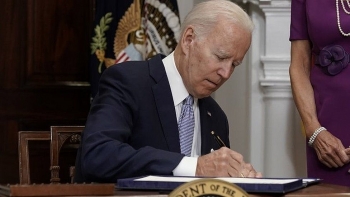 Full Text: The First Major Gun Safety Bill in the United States Full Text: The First Major Gun Safety Bill in the United States Congress passed compromise legislation this week on gun safety that is now waiting to be signed into law by President Joe Biden. Read the full ... |
 Top 30 Highest Paying Jobs In New Jersey In 2022 Top 30 Highest Paying Jobs In New Jersey In 2022 To find the best and highest-paying jobs in New Jersey in 2022, scroll down and keep reading the article below. |
 Top 30 Highest Paying Jobs You Can Find In Florida Top 30 Highest Paying Jobs You Can Find In Florida If you are looking for a high-paid job with many opportunities to grow, these 30 jobs can be the perfect choices for you. |


























